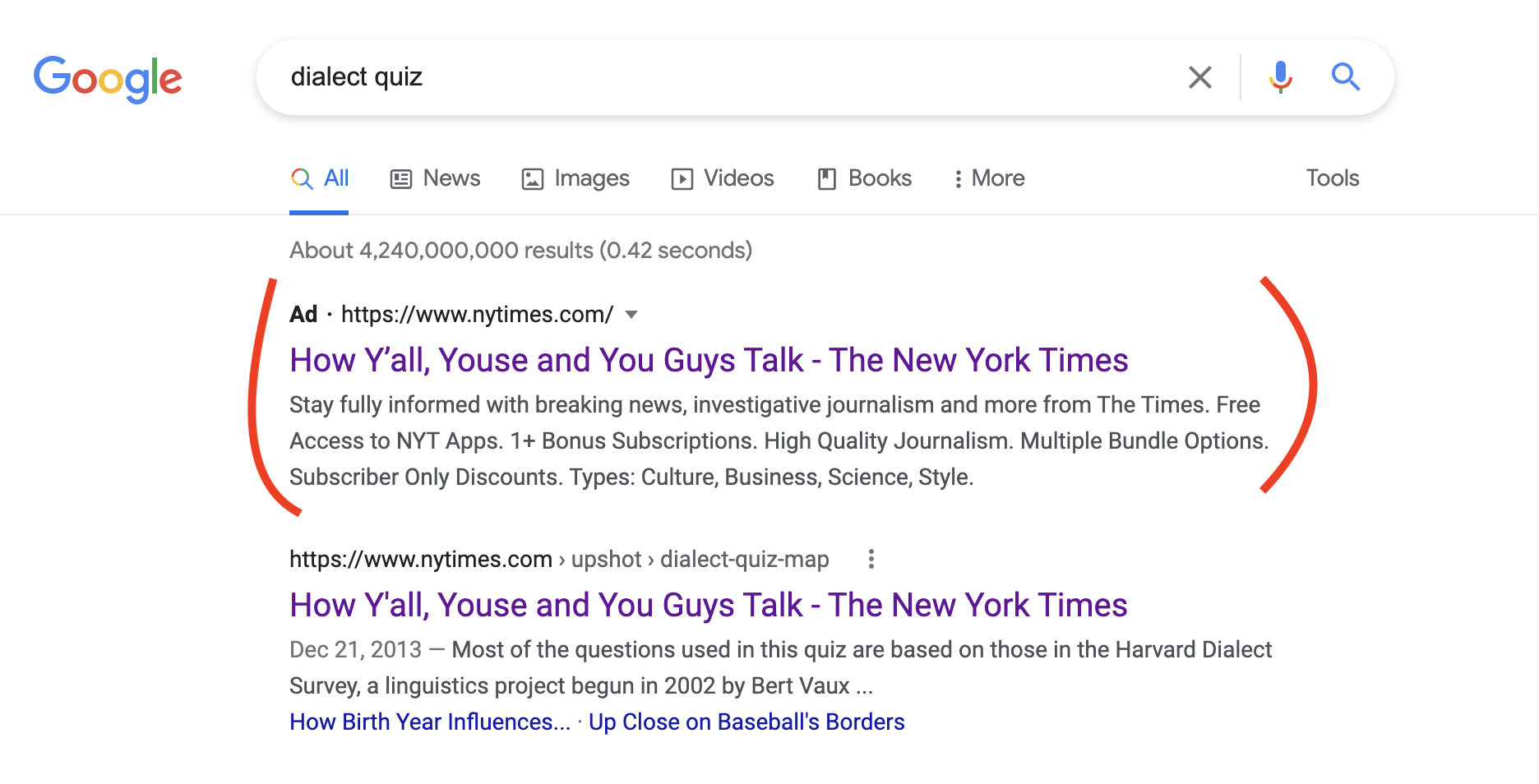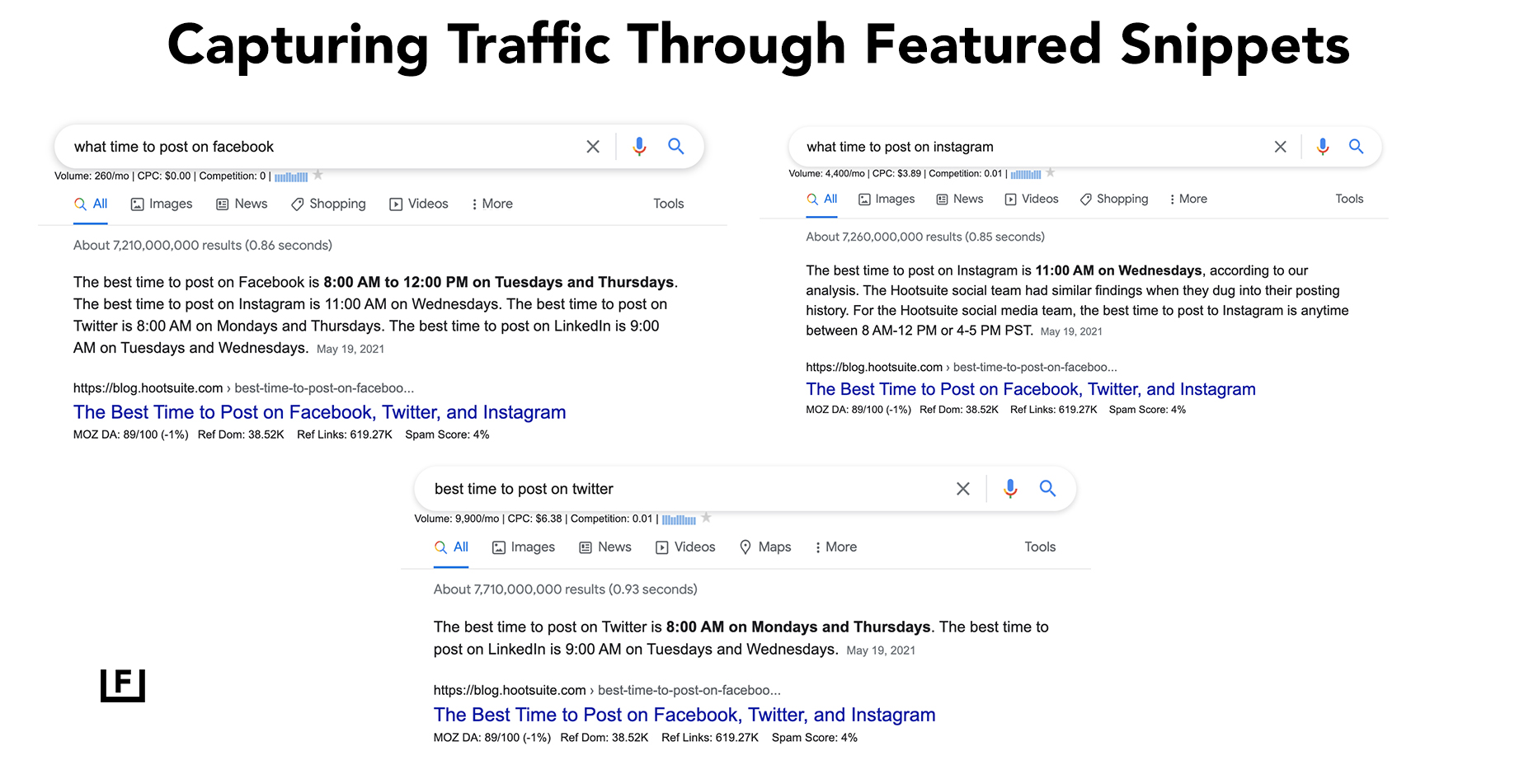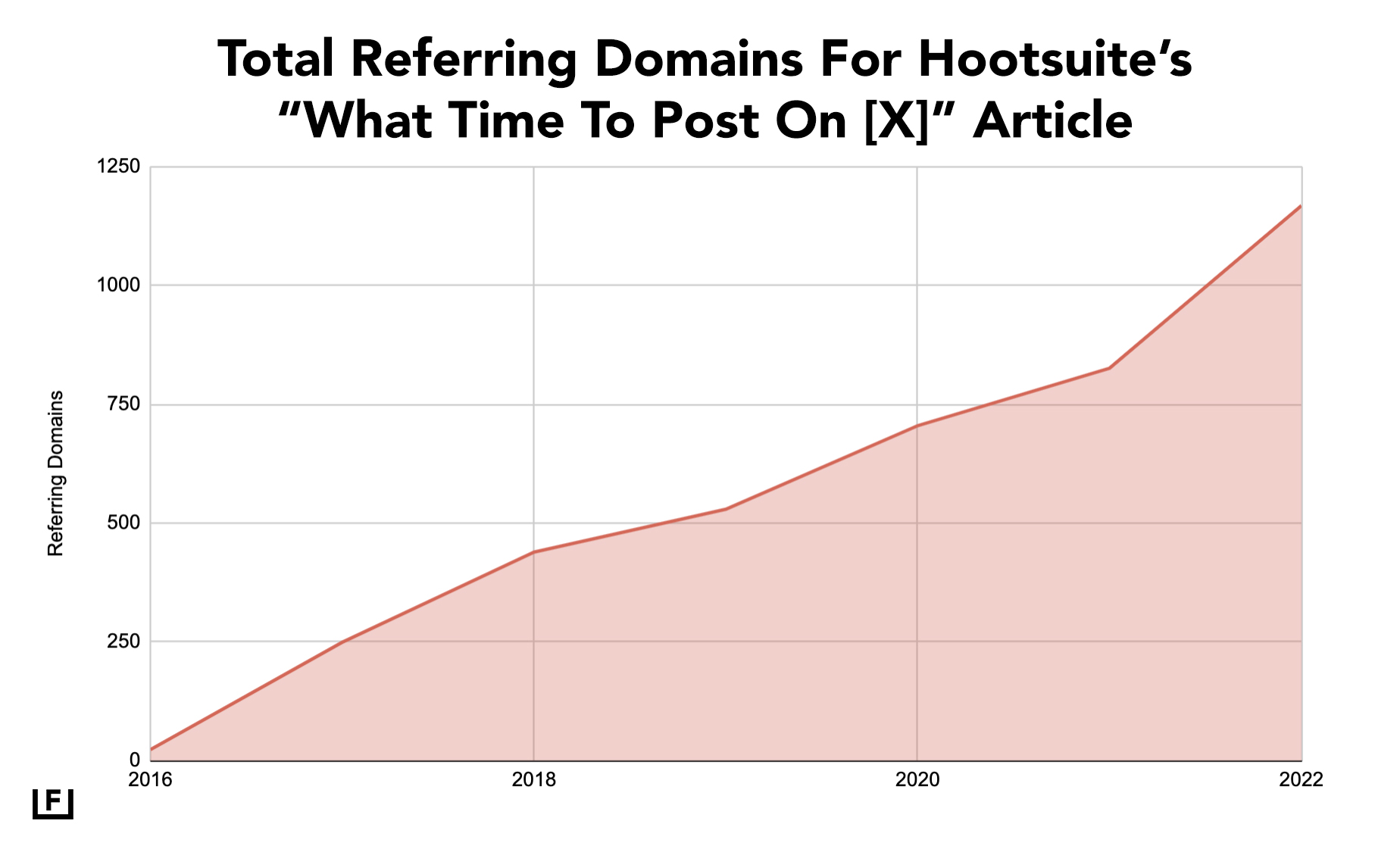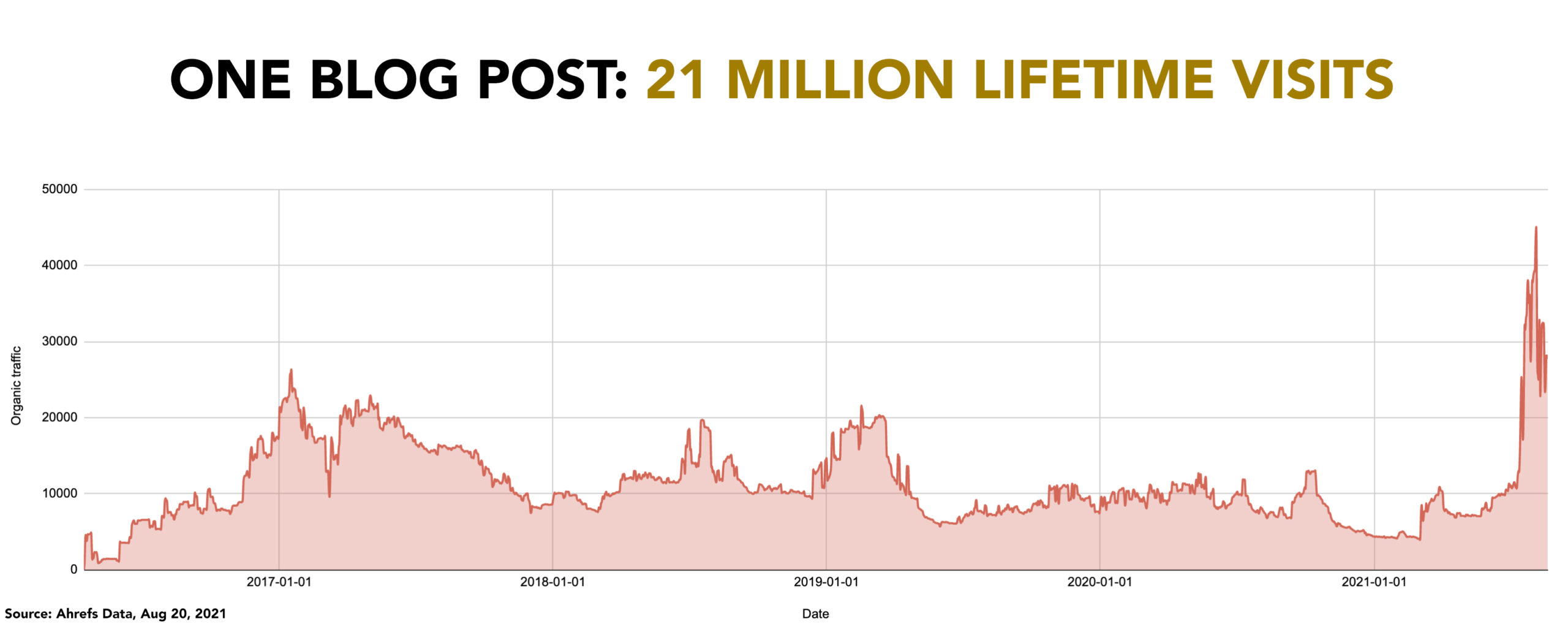One of my biggest life regrets is selling all of my Tesla stock back in 2018.
I bought it in 2016 for less than $50 a share… Since then, it’s gone to the moon and is worth more than $650 at the time I write this. I haven’t done the calculation to see exactly how much I would be up right now if I held onto all of them but I can safely assume… It would have been a decent chunk of change that could have helped put my kids through school.
I’ve learned my lesson though. You have to HOLD. Or like the cool kids say…
HODL (Hold On For Dear Life)
This isn’t investment advice btw.
This is a sentiment that is 100% applicable to marketing.
Especially content marketing. I want to take you back in time for a second.
Let’s rewind to 2013.
In December 2013, the NY Times published one of it’s most successful pieces of content in the history of the company. Beyond that… I’d say it was one of the most successful pieces of content in the history of the internet. It was a piece titled: “How Ya’ll, Youse and You Guys Talk”. The piece was a quiz where you answer 25-30 questions like:
- How do you pronounce aunt?
- How do you pronounce crayon?
- How would you address a group of two or more people?
- Do you call the sweet spread that is put on a cake frosting or icing?
And after you answer all of the questions, it shows you a personal dialect map surrounding your speech and who you’re more likely to speak like in the US. Apparently, I speak like a Bostonian with a splash of Miami.
Here’s why this piece of content is relevant to you:
This piece was created in 2013 and it’s STILL being amplified by NY Times.
You know the saying: “Create once. Distribute forever.” – The way the NY Times treats the Dialect Quiz is an example of this happening right now in front of all of us. It’s such a powerful piece that the NY Times still runs ads for this phrase in Google when someone types “Dialect Quiz”:

Each month there are 6,600 searches for a dialect quiz and even though NY Times ranks #1 for this content organically; they’re willing to pay to capture additional traffic.
This is what it means to HOLD onto a content investment for the long run.
B2B and SaaS companies can learn a lot from this strategy. After investing in content for a few months, it’s likely that you will eventually start to develop a series of your own ‘greatest hits’. These assets are worth continuing to optimize, distribute and repurpose for months to come.
As an example, in 2016, Hootsuite published a piece titled “The Best Time to Post on Facebook, Twitter and Instagram in 2016” it included an infographic and a call to action driving people to learn more about their tool and how they could schedule content for the best times. The original piece was 1,089 words with one infographic.
The piece that lives on the exact same URL today is much more in-depth with 3031 words and 5 data visualizations to support it and a table of contents. Hootsuite has continued to invest in this piece by updating the content regularly and making it one of the best pieces on the internet surrounding the question: What’s the best time to post on [Social Network]?
As a reward, it’s been able to sustain itself in the SERP capturing a ton of organic traffic every single day by owning the featured snippet:

Look closely…
You will see that 9,900 people a month type “best time to post on Twitter”, 4,400 people type “what time to post on Instagram” and 260 people type “what time to post on Facebook” and Hootsuite’s blog post ranks number one in the featured snippet for all of these search queries. It’s truly a thing of SEO beauty.
The blog post has 25,000+ historical backlinks from over 2,300 different domains. The growth in terms of backlinks hasn’t happened overnight as you can see from this estimate surrounding their referring domain growth. The number of referring domains has been steadily on the climb since it first went live and is showing no signs of slowing down:

And the content-product alignment couldn’t be better…
People going to Google to find out the best time to post on Instagram are aware of a problem:
Not all times are created equally…
And by learning about this from Hootsuite; they’re also able to learn about a product that can help them schedule their content to be published at the optimal time. It’s the perfect collection of keywords to go after and the monthly traffic that Hootsuite has been able to capture through this blog post alone demonstrates the power of treating content as an investment.
Here’s a look at the estimated traffic that this piece has generated over the last few years:

On average, the blog post is estimated to have generated anywhere from 5,000 to 40,000 monthly visits and since publishing it’s generated 21 million visits.
Notice that recent spike? Looks like it’s only NOW beginning to pay even greater dividends than it did in the early days.
This is why you don’t give up on old content that has potential.
This is why you don’t stop optimizing, remixing and distributing your content.
I talk about this idea a lot in this webinar with Similarweb. If you haven’t seen it – Check it out:
Remember:
Content published today has the potential of being worth millions tomorrow.
And that’s no exaggeration…
Here are a few case studies that showcase the power of creating an SEO moat:
- How Airtable’s Long Tail SEO Strategy Is Helping Build Their Moat
- How Shopify Drives $6M Worth Of Traffic Using One SEO Driven Tool
- How Adobe and Docusign Compete To Establish an SEO Moat Using Search Intent
- Glassdoor’s Backlink Brilliance: How A Content-Focused Culture Led To A $1.2B Acquisition
Let’s start changing the narrative around content marketing being an expense and showcase the importance of our content marketing efforts being viewed more like an investment.
Quick, do it now before the next drop!







